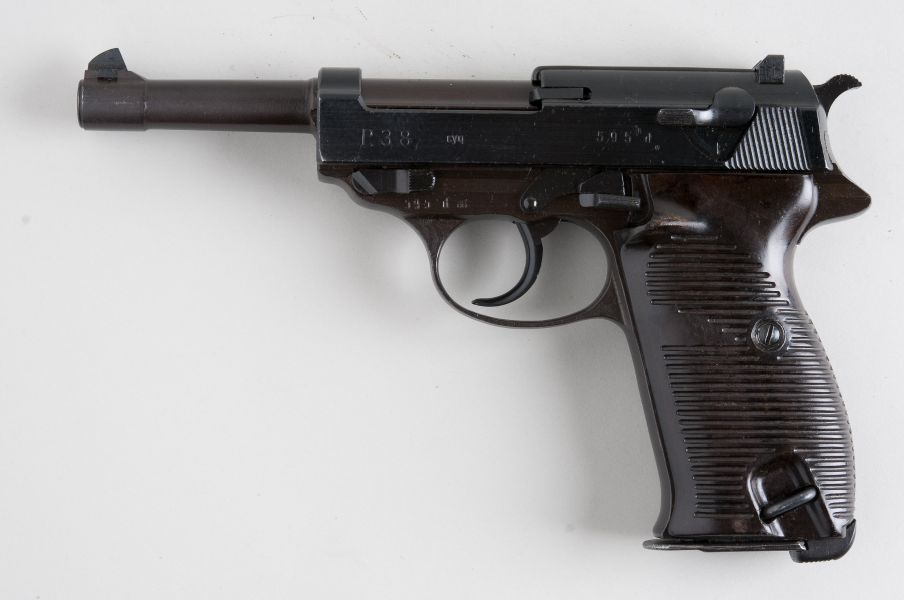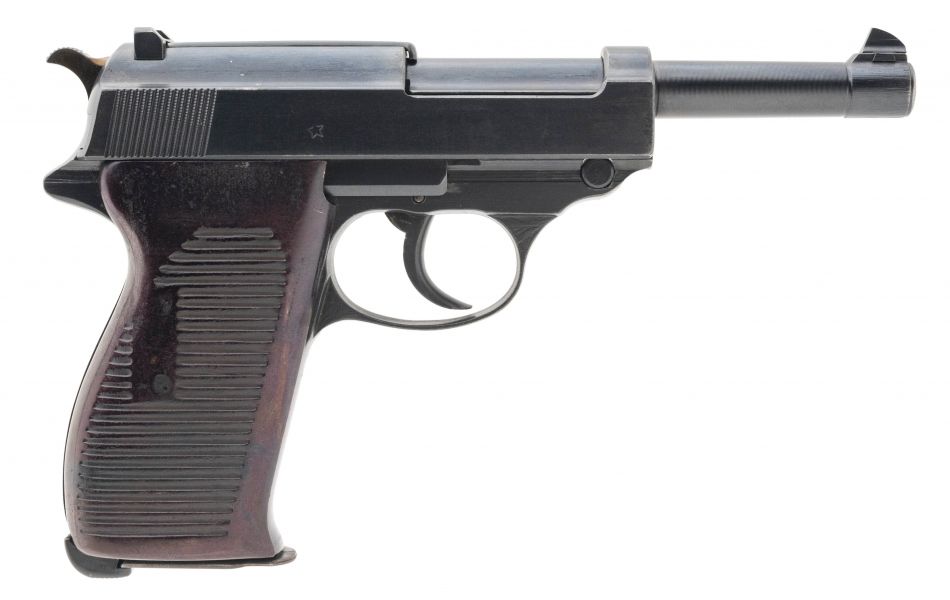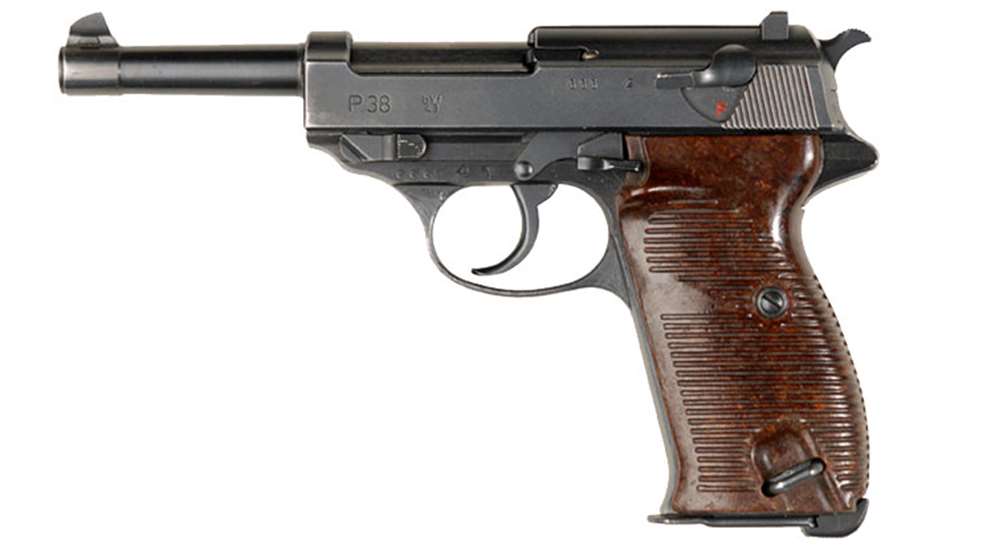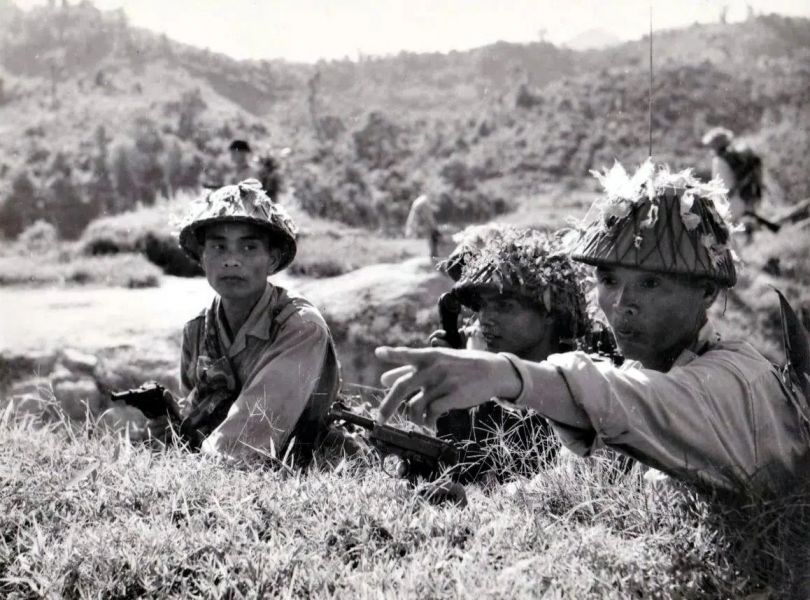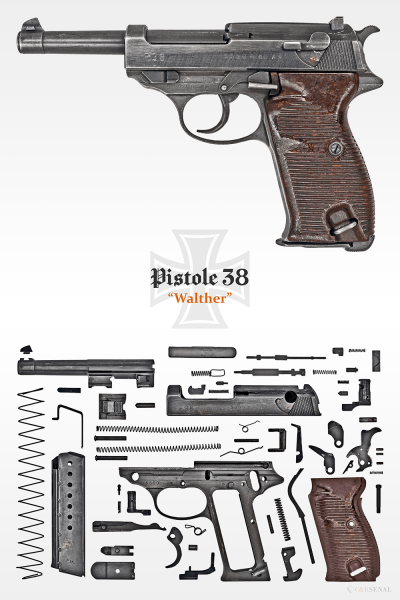Dual Walther P38
| Factions | Weapon | Icon | Classes | Ammo |
|---|---|---|---|---|
 VC |
 Dual Walther P38 |
 |
Gun Game Zombies |
16+2 / 48 |
| Damage Base | Headshot × | Chest × | Stomach × | Leg × | Arm × | Reload Speed | |
|---|---|---|---|---|---|---|---|
| Partial | Empty | ||||||
| 29 | ×2.4 = 69.6 | ×1.6 = 74.2 | ×1.5 = 43.5 | ×1.15 = 33.3 | ×1.15 = 33.3 | 4.4 Seconds | 6.133 Seconds |
| Designation | Weapon Type | Fire Modes | Fire Rate | Bullet Spread ° | Range Modifier | Muzzle Velocity | Projectile weight | Weight |
|---|---|---|---|---|---|---|---|---|
| P38 | Dual Pistols | Semi | 50 RPM | 8.31° & 4.29° ADS | 0.75 | 315 m/s | 6.1 g (94.13 gr) | 1.474 kg (3.24 lbs) |
| Full name | Caliber | Place of Origin | Date | Manufacturer | Barrel Length | Total Length | Weapon Script Name |
|---|---|---|---|---|---|---|---|
| Walther P38 | 9x18mm | Nazi Germany | 1939 | Carl Walther Waffenfabrik, Mauser Werke, Spreewerk |
4.9 in (125 mm) | 8.5 in (216 mm) | weapon_dual_p38 |
The Walther P38 (originally written Walther P.38) is a 9 mm semi-automatic pistol that was developed by Carl Walther GmbH as the service pistol of the Wehrmacht at the beginning of World War II.
HISTORY
Due to the high production cost of the Luger P08, Germany sought a replacement in 1927, selecting the Walther P38 in 1938. The P38 offered similar performance but was quicker to produce. Initially featuring a hidden hammer, the German Army requested an external hammer redesign. Accepted in 1938, prototype production began in late 1939 at Walther's Zella-Mehlis plant. Three series of "Test" pistols with a "0" serial number prefix were made, resolving issues by the third series. Mass production started in mid-1940. Experimental versions in .45 ACP and .38 Super were made but not mass-produced, while some 7.65×21mm Parabellum and .22 Long Rifle versions were sold.
SOURCE
-
Vietnam: L Co Ranger with a chrome P38.
-
Officers of the PAVN during field maneuvers. They are visibly carrying Walther P38 pistols.
